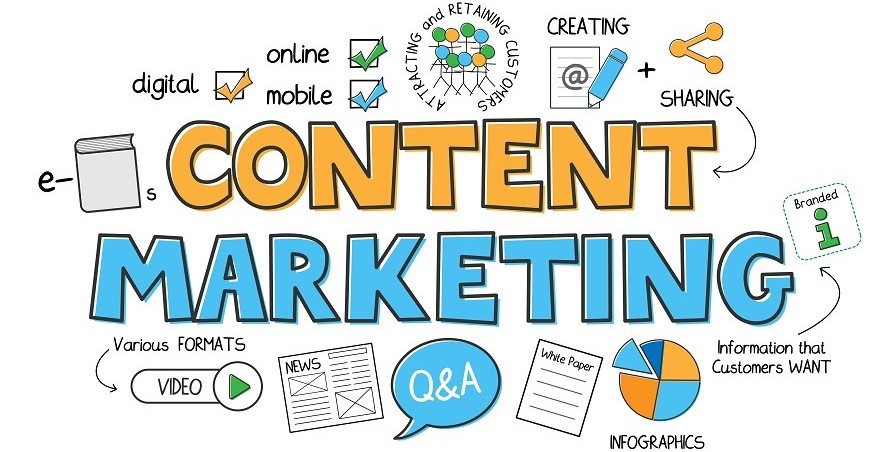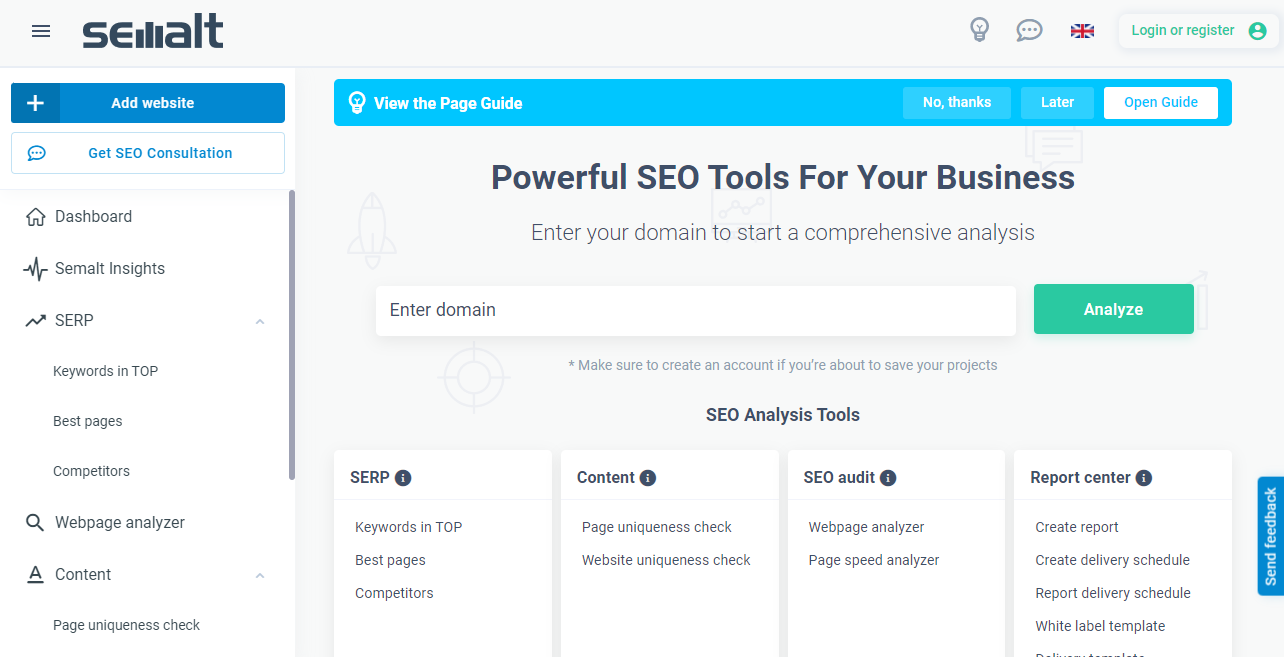A Few Words From Semalt About The Importance Of Content And Its Future In SEO

A few days ago, a special conference on content and its importance in SEO took place! We couldn't miss it because of the special program of the event and the topic, namely content optimization in a broad sense. The 4 days of the conference were a huge dose of knowledge, served by the best specialists from all over the world. There were also SEO representatives from the US, UK and Sweden who shared their experiences working on content. And we decided to share with you the most important conclusions and a summary of the topics we remember most from this year's conference.
If you want to succeed in SEO in 2022, I invite you to read this article all the way through.
Content is King!

This has been a controversial issue for many years among SEO specialists, but we know one thing: NEVER, EVER, can you ignore optimization and content development during website activities. This conference showed us how to facilitate the creation of a proper strategy, how to tailor it to the client and what tools should be used in this work.
In the process, we discovered what the approach to this topic is like among foreign specialists who have developed their own content optimization process over the years. Together, however, we can conclude that page content is an important element of SEO.
Planning a strategy

The content creation process must be properly planned to meet the expectations of users and SEO principles. It is not an easy procedure, as it requires compliance with many guidelines that should be kept in mind at every step. So where to start? In the beginning, these should be clearly stated:
- Who are your target customers / readers?
- What do they expect?
- Where can you find them?
- How to use your content through distribution and re-purpose?
After answering these questions, it should be determined directly from the source what content is of interest to the users visiting the website. This is mainly the type of information, the format in which it is presented, an indication of a specific topic that would seem useful to the users at the moment, and additional questions and answers that they would be happy to read in the future.
A great way to establish personal contact with users is the welcome email, in which the above questions are asked. If someone wants to have a real impact on the content that appears on the site, they will certainly be willing to answer at least some of them in order to get real benefits. You can also think of other ways, such as:
- a question on the website in the form of a pop-up;
- periodic surveys among website visitors;
- interviews with clients;
- talking to people responsible for selling products / services.
Based on this, you can choose a method of preparing the content in a way that will be easy to read for the user, and at the same time interesting in terms of substance. At this point, you can move on to the implementation of the content, about which, here are a few words.
Keyword selection with search potential
Many speakers at the conference talked about the importance of good key phrase selection for content in their presentations. It's not just about a large number of searches per month, that's important, but even the best-optimized content for a demanding keyword may not be very interesting to the user.
During the key phrase selection process, you should also consider the user's intent (which I'll discuss later) and how closely the phrase matches the topic being described. This is where specialized analysis tools such as the Dedicated SEO Dashboard come into play. With this tool, you can search for expressions related to a theme, select a few to use and export them, for example to a CSV file, in order to integrate them later in a file or a content planner.

Additionally, you can use the help of several other tools, such as:
- a program presenting frequently asked questions by users;
- forum-type applications where users can ask questions or give answers;
- social media and local communities.
However, the most important thing is to observe your own website with regard to its analytics, social media, paid advertisements. It is important to constantly check where the most users are coming from, what content they are interested in, and which keywords lead to specific entries. Thanks to this, you can choose the right direction when you choose a topic and associate a set of key phrases with it.
User intentions
Keywords should always be tailored to the user's intentions. What does that actually mean? The best way to show this is with an example. The user opens Google, enters the phrase "summer dresses" in the search engine, presses enter and receives a list of results. What do you think exactly he wants to find in this list? This is a typical product phrase, so the most accurate result will be stores pointing to the "dresses" or "summer dresses" category. It may happen, however, that among several products, the user will come across a blog entry where he will not find any information related to the sought product.
He will therefore leave such a page immediately after entering it, which will increase the bounce rate. The owner of the website, which is displayed after the phrase "summer dresses" should thus find something to think about - the blog page does not correspond to the user's intention that he associates with this phrase. Proper optimization of the product sub-page should significantly increase website traffic, and thus also conversion. This is why user intent is extremely important when placing phrases on the website.
Semantics in Content Marketing
Many internet users today only associate SEO with spam articles, like those from Shopping Sunday. You don't have to look far, the first example comes from search engines.
The answer to the question asked is usually only found at the end of the articles, which is very annoying for Internet users. That's why the conference couldn't miss a presentation on the semantics of content - how to prepare it to be readable and user-friendly, and not just prepared for work.
So we're back to the sentence selection stage. You need to go through it with these 3 most important factors in mind:
- phrase type;
- user's intention;
- the page type assigned to the phrase.
Google organizes the data presented in this way, guided primarily by the user's intent. However, this is related to the type of sentences that meet the researcher's expectations. Therefore, this data has been divided into 3 types:
After choosing a phrase set, we focus strictly on semantics.
The most important feature of the content is that it is readable for the user, which is why we focus strongly on the visual aspects. So we divide the text - creating the h1 heading, breaking the main content into paragraphs and adding h2 headings to them, but we cannot forget to create metadata that will encourage the client to enter the link.
In most of these items, the key phrase on which we want to be visible should not be missing. But our keywords should not be used in every sentence and title, as is the case with articles on Shopping Sunday.
So how do you find a compromise?
One of the speakers in his presentation stated some short rules that should help to create semantically correct content. He talked about:
- using the phrase only once at the beginning of the title tag;
- using the phrase only once in the H1 header;
- use a phrase 2-4 times for every 500 words - this is an assumption, as there is no rule about the frequency of phrases in the text.
When creating content, you should focus on its quality, providing users with texts that meet their expectations and at the same time ensuring high marks from robots. However, we know that dense keyword placement is not the way to increase traffic. What counts is the topic - its presentation, compliance with the user's intention and weaving a few key phrases into an interesting description. It is not around key phrases that the text should be created, but words that will fully fit into it should be selected around the topic of the content.
At the final stage of creation, it is worth taking care of the visual qualities of the text. The enormity of the content, exhausting a specific topic, may turn out to be too tiring for the user and after some time, instead of reading it to the end, the user will leave the page. Each editor creating a text should remember the following:
- to break it down into paragraphs, sections, chapters;
- the use of headings separating parts of the discussed topic from each other;
- adding a few graphics / photos / charts / tables - depending on the length of the text;
- weaving visually interesting quotes into the content, if they are to appear;
- bullets, creating lists, and adding other available formatting.
The most important rule for content creation? Do not use only keywords, find and use semantically related words and phrases in your text.
Storytelling
Content creators need a story to sell - these are the words of Ryan Foland, who made an incredibly interesting presentation on storytelling. A creative approach to writing texts will surely influence their reading and the feeling of readers. So if we present them an interesting story in an appropriate way, presenting our experience as specialists and years of work in the industry, a new group of clients can be acquired.
By describing your experience, you build an opinion among others, and by doing it well you become an expert in a given field in the eyes of your clients or readers. Therefore, when creating a story, you should both use your previous experience and share the knowledge gained through years of experience. The best way to do this is through storytelling, i.e. presenting your story, which will make the creator an expert and attract crowds.
Through storytelling, we give people the opportunity to get to know themselves and their products, while building trust in them. Trust is the success of every sale. However, the point is not to focus solely on yourself, the story should be written in such a way that every reader sees himself in it.
We tell stories practically every day, answering the questions "how was your day?", "What is happening at work?", Or even the usual "how are you?" We create a story that stimulates the listener and encourages him to ask new questions. This is exactly how you should approach content creation! Do it in such a way that the reader sees a lesson in the story for himself, so that he can get the most out of it and feel that he wants to trust you.
Summary
Content has always been and will be an important element of SEO. This conference was a great example of how we can approach the topic of content in different ways, just to find one that will help us reach users. We learned not only where to start, but also how to arrange the entire content creation strategy, how to choose key phrases and, above all, how to meet the expectations of Internet users who enter words in the search engine in order to obtain a specific result.
We hope that this is not the last such event, bringing together specialists from many countries. The exchange of knowledge and experiences is very valuable, especially when we can learn a lot from each other.
If you need to learn more about the subject of SEO and website promotion, we invite you to visit our Semalt blog.